 The Group Fitness Class of the Month is BODYATTACK. When reading that name, what first comes to mind? For me, I immediately think, “Okay, slightly intimidating, but I’m intrigued. This better be good.” As a former dancer, avid runner, and group fitness instructor of multiple formats, I’d like to consider myself as having relatively good cardiovascular endurance and overall bodyweight strength. Well, let me tell you, friends, this class is no joke! Hang on now—before any of you new exercisers click away to look for an easier class, let me assure you, you too can participate! I will tell you how, but let me first give you a little background.
The Group Fitness Class of the Month is BODYATTACK. When reading that name, what first comes to mind? For me, I immediately think, “Okay, slightly intimidating, but I’m intrigued. This better be good.” As a former dancer, avid runner, and group fitness instructor of multiple formats, I’d like to consider myself as having relatively good cardiovascular endurance and overall bodyweight strength. Well, let me tell you, friends, this class is no joke! Hang on now—before any of you new exercisers click away to look for an easier class, let me assure you, you too can participate! I will tell you how, but let me first give you a little background.
What Is BODYATTACK?
BODYATTACK is a pre-choreographed workout program created by New Zealand–based Les Mills. By definition, it is, “…a high-energy fitness class that caters for total beginners or total addicts. We combine athletic movements like running, lunging, and jumping with strength exercises such as pushups and squats.” The format ranges from 50–60 minutes, and can include 9–11 music tracks. The main focus for each track is
- Warmup
- Mixed Impact
- Plyometric
- Athletic Strength
- Running
- Agility
- Power
- Core
- Cooldown
A Challenge in All Movement Patterns
Talk about a heart pumper! All of these components are rolled into this one class, which is one of the reasons why I loved taking it. Think about the last time you had to make a quick balance shift, change direction, or switch your movement to accommodate what’s coming next within a moment’s notice. BODYATTACK takes you through all types of functional movement patterns to get you better in shape and better prepared for the “sport of life,” as Program Director Lisa Osborne states it. We do so much lifting on the gym floor—which, don’t get me wrong, is AWESOME—to be strong and lift heavy; I strive to make time to do programming like that during the week as well. However, I am a firm believer in variety and balance, which is why I got into classes in the first place and eventually teaching group fitness myself. I want to make sure the work I do in the gym translates to what I do in everyday life.
BODYATTACK challenged me in all movement patterns which, as fitness professionals, we know are essential to our overall fitness, yet sometimes we tend to neglect them when we plan our own workouts. This class had me move laterally, forward, then immediately backwards, then diagonally. Then we jumped down to the floor to work horizontally focusing on upper body and core. It can be intimidating at first, but I can assure you that if you have a good instructor teaching (which this class did), he or she will always offer plenty of modifications so that any level of fitness can participate. Functionality is key, and if something has a main goal of keeping me agile, able, and mobile, I’m all about it!
Proven Results
Another great factor of this class is the proven results it has the potential to provide. This program was researched and tested among willing participants to make sure the format performs and provides effective results. According to a recent study at Penn State, it was found that there were “…significant increases in leg and back strength as well as positive changes in aerobic fitness, agility, and power over the participants that completed three BODYATTACK classes over the course of six weeks.” Not too shabby for a few times a week!
My Challenge to You
So I challenge you, if you’re still reading this, to step out of your normal routine this month and give it a try once each week, and give your body that extra spike during your workout time. Think about it: that’s only four or five workouts within a whole 30-day period to sprinkle into your month! Who knows, maybe you’ve begun to hit a plateau and this class might be exactly the right amount of high-intensity cardio to shed that extra pound or two that can compliment your weight training on other days.
Try It at NIFS
Never tried BODYATTACK, or even group fitness for that matter, before? No problem! With any class you take here, we encourage the “Smart Start,” which includes staying for the first few tracks/songs of the workout, or simply half of the class. Then, when you feel that you’ve had enough or if that’s all you can do for now, you head out for the day with the motivation to stay for one more track next time you come back, until you find yourself completing the full class.
Check out the times for BODYATTACK on our group fitness schedule and see some of the other classes we offer. If you have never tried a group fitness class at NIFS before, and want to take that first step and check us out, find out how to try a group fitness class for free!

This blog was written by Rebecca Heck, Group Fitness Coordinator and Health Fitness Instructor. To read more about the NIFS bloggers, click here.
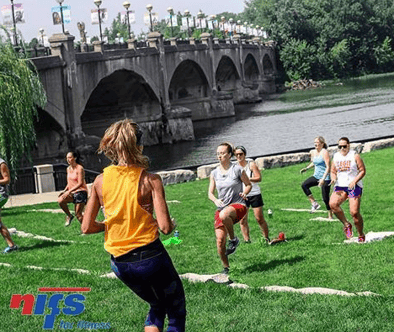 Tabata is currently one of the trendiest workouts, due to the amazing results people are attaining. It's a high-intensity interval training (HIIT) format that consists of 8 rounds of an exercise performed for 20 seconds with a 10-second rest period.
Tabata is currently one of the trendiest workouts, due to the amazing results people are attaining. It's a high-intensity interval training (HIIT) format that consists of 8 rounds of an exercise performed for 20 seconds with a 10-second rest period.

 The Group Fitness Class of the Month is BODYATTACK. When reading that name, what first comes to mind? For me, I immediately think, “Okay, slightly intimidating, but I’m intrigued. This better be good.” As a former dancer, avid runner, and group fitness instructor of multiple formats, I’d like to consider myself as having relatively good cardiovascular endurance and overall bodyweight strength. Well, let me tell you, friends, this class is no joke! Hang on now—before any of you new exercisers click away to look for an easier class, let me assure you, you too can participate! I will tell you how, but let me first give you a little background.
The Group Fitness Class of the Month is BODYATTACK. When reading that name, what first comes to mind? For me, I immediately think, “Okay, slightly intimidating, but I’m intrigued. This better be good.” As a former dancer, avid runner, and group fitness instructor of multiple formats, I’d like to consider myself as having relatively good cardiovascular endurance and overall bodyweight strength. Well, let me tell you, friends, this class is no joke! Hang on now—before any of you new exercisers click away to look for an easier class, let me assure you, you too can participate! I will tell you how, but let me first give you a little background. For the month of May, we are highlighting Boot Camp as our
For the month of May, we are highlighting Boot Camp as our 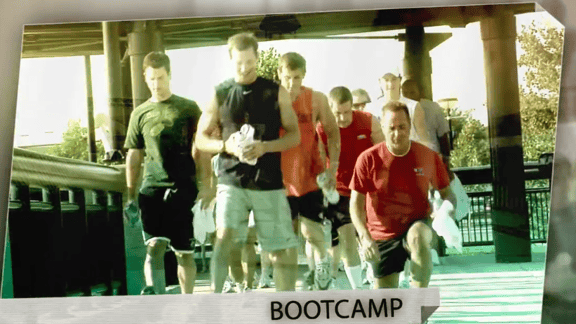
 When it comes to settling back into school, adjusting to the crazy schedule can become one of the biggest tasks. From classes each day, to group project meetings, to homework due dates and the dreaded semester exams, how are we supposed to find the time to keep ourselves healthy and fit?
When it comes to settling back into school, adjusting to the crazy schedule can become one of the biggest tasks. From classes each day, to group project meetings, to homework due dates and the dreaded semester exams, how are we supposed to find the time to keep ourselves healthy and fit? 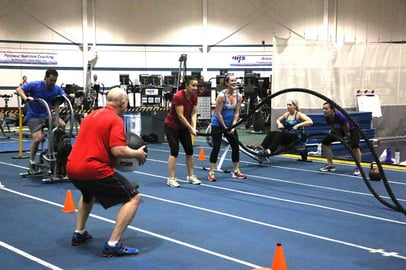 If you have ever participated in High Intensity Training (HIT), you will quickly discover what separates this style of workout from other popular styles you may know, like super sets or pyramid training. The main intention behind high intensity training workouts is that the workout will challenge your body to such a level of discomfort that its threshold or maximum capacity has no choice but to rise. Now don’t let the word “such a level of discomfort” scare you away; it’s the discomfort level that we all feel during exercise at some point, and of course you can push past it.
If you have ever participated in High Intensity Training (HIT), you will quickly discover what separates this style of workout from other popular styles you may know, like super sets or pyramid training. The main intention behind high intensity training workouts is that the workout will challenge your body to such a level of discomfort that its threshold or maximum capacity has no choice but to rise. Now don’t let the word “such a level of discomfort” scare you away; it’s the discomfort level that we all feel during exercise at some point, and of course you can push past it.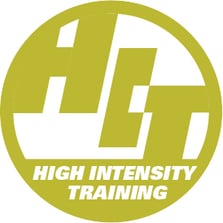

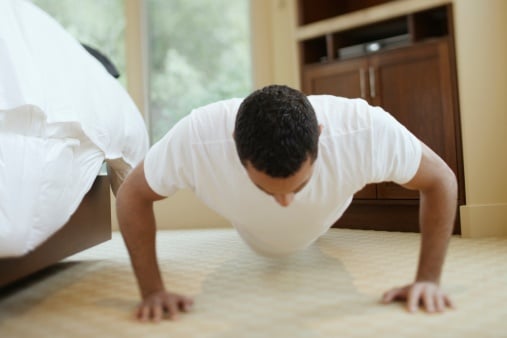 Okay, so maybe you’re not a morning person, and would much rather remain cozy in your queen-sized bed for several hours after waking up before finally finding the energy and motivation to make your way to the gym during the middle of the day. Maybe you’re the type of person who likes to take care of your priorities first during the day, and then only if left with enough time sneak in a late-afternoon or nighttime workout before ending your day.
Okay, so maybe you’re not a morning person, and would much rather remain cozy in your queen-sized bed for several hours after waking up before finally finding the energy and motivation to make your way to the gym during the middle of the day. Maybe you’re the type of person who likes to take care of your priorities first during the day, and then only if left with enough time sneak in a late-afternoon or nighttime workout before ending your day.
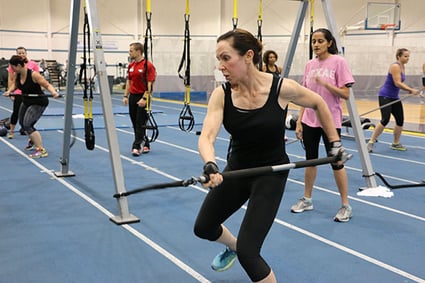 High-Intensity Interval Training
High-Intensity Interval Training